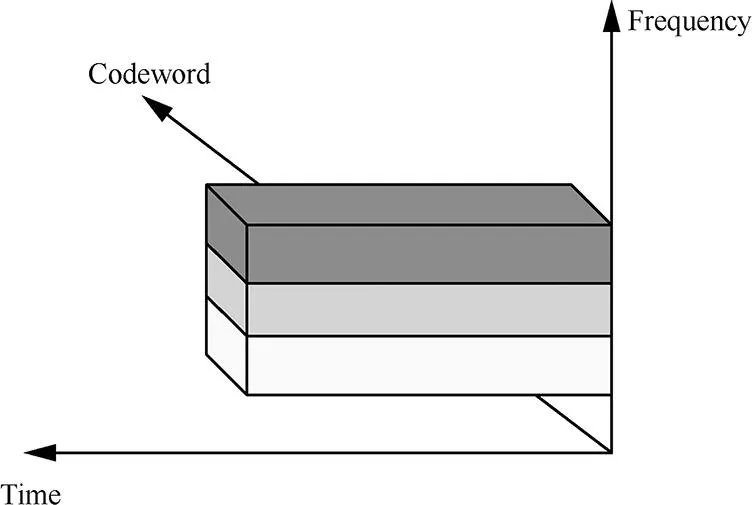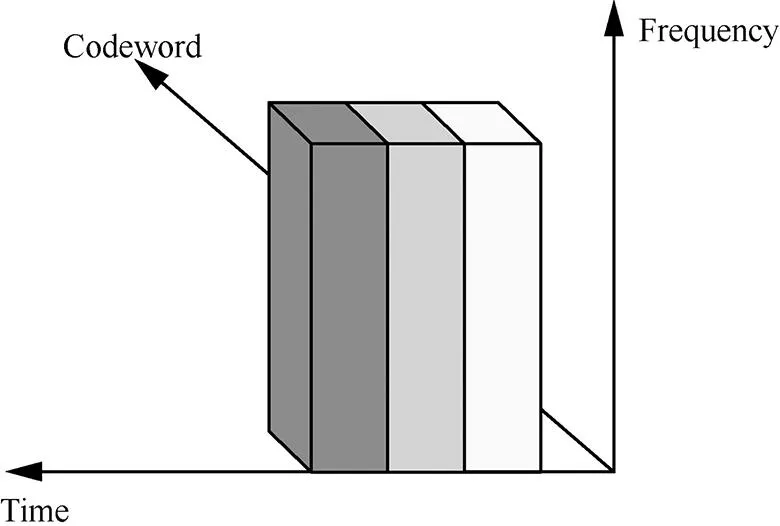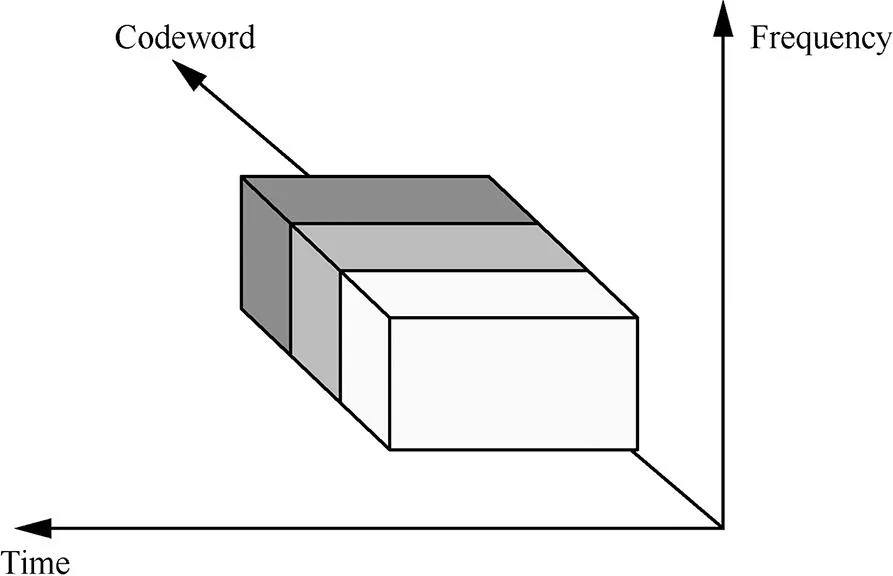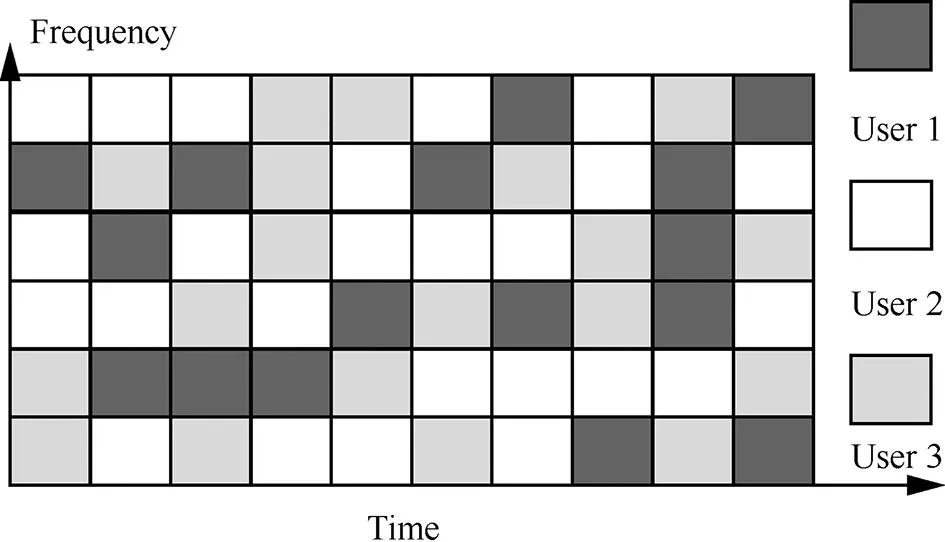
- 153 pages
- English
- ePUB (mobile friendly)
- Available on iOS & Android
eBook - ePub
About this book
Starting with an overview of current research progresses on multiple access technology, the book then presents the theoretical fundamentals, technical principles, transmission scheme, key technologies and evaluation results of new multi-access technologies, especially focusing on its typical applications 5G communication systems. With extensive practical cases, it is an essential reference for researchers, engineers and graduate students.
Frequently asked questions
Yes, you can cancel anytime from the Subscription tab in your account settings on the Perlego website. Your subscription will stay active until the end of your current billing period. Learn how to cancel your subscription.
No, books cannot be downloaded as external files, such as PDFs, for use outside of Perlego. However, you can download books within the Perlego app for offline reading on mobile or tablet. Learn more here.
Perlego offers two plans: Essential and Complete
- Essential is ideal for learners and professionals who enjoy exploring a wide range of subjects. Access the Essential Library with 800,000+ trusted titles and best-sellers across business, personal growth, and the humanities. Includes unlimited reading time and Standard Read Aloud voice.
- Complete: Perfect for advanced learners and researchers needing full, unrestricted access. Unlock 1.4M+ books across hundreds of subjects, including academic and specialized titles. The Complete Plan also includes advanced features like Premium Read Aloud and Research Assistant.
We are an online textbook subscription service, where you can get access to an entire online library for less than the price of a single book per month. With over 1 million books across 1000+ topics, we’ve got you covered! Learn more here.
Look out for the read-aloud symbol on your next book to see if you can listen to it. The read-aloud tool reads text aloud for you, highlighting the text as it is being read. You can pause it, speed it up and slow it down. Learn more here.
Yes! You can use the Perlego app on both iOS or Android devices to read anytime, anywhere — even offline. Perfect for commutes or when you’re on the go.
Please note we cannot support devices running on iOS 13 and Android 7 or earlier. Learn more about using the app.
Please note we cannot support devices running on iOS 13 and Android 7 or earlier. Learn more about using the app.
Yes, you can access Multiple Access Technologies for 5G by Jie Zeng, Xin Su, Bin Ren, Lin Liang, Jie Zeng,Xin Su,Bin Ren,Lin Liang in PDF and/or ePUB format, as well as other popular books in Technology & Engineering & Electrical Engineering & Telecommunications. We have over one million books available in our catalogue for you to explore.
Information
Edition
1Chapter 1 Outline of Multiple Access Technology
1.1 History of Multiple Access Technology
Jie Zeng
Multiple access is a technique to implement multi-user communications by letting multiple users share one common channel, and it is one of the core physical layer techniques in wireless communications. The orthogonal resource allocation method is always applied in multiple access techniques, such as the Frequency Division Multiple Access (FDMA) in the first generation (1G) communication systems, the Time Division Multiple Access (TDMA) in the second generation (2G) communication systems, the Code Division Multiple Access (CDMA) in the third generation (3G) communication systems and the Orthogonal Frequency Division Multiple Access (OFDMA) in the fourth generation (4G) communication systems. However, when facing 2020 and the future, besides improving the system frequency efficiency, the fifth generation (5G) communication systems also need to support massive user equipment connections. This means more intelligent and higher efficiency resource allocation techniques need to be considered and the new multiple access (NMA) technique is thus proposed.
1.1.1 Frequency Division Multiple Access
In the 1980s, 1G analog cellular mobile communication network achieved commercial-scale application. Typical systems in 1G include the Advanced Mobile Phone System (AMPS) in the USA, the Total Access Communications System (TACS) in England and the Nordic Mobile Telephony System (NMTS) in northern Europe. The first generation (1G) uses analog modulation and FDMA as the main techniques. The principle of FDMA is illustrated in Figure 1.1. By cutting the total frequency channel into several uncorrelated sub-channels and allocating different sub-channels to different users, different users can be allocated in the same slot with different frequencies. Protection frequency band usually needs to be configured between sub-channels to resist nonideal filter, adjacent channel interference and frequency spread caused by Doppler shift [1]. Due to the drawbacks of FDMA-based analog cellular systems, such as low spectral efficiency, security risks and weak interference resistance ability, it was abandoned as a result of the market competition.

Figure 1.1: FDMA technique.
1.1.2 Time Division Multiple Access
The 2G system, a narrowband digital cellular system and represented by the Digital AMPS (DAMPS) in the USA and Global System for Mobile communications (GSM) in Europe, is widely used in the 1990s, which applies TDMA and narrowband CDMA. As illustrated in Figure 1.2, the transmission time is divided into different slots in TDMA, the transmission/reception of the user occupies one respective slot. However, different users cannot transmit simultaneously, in other words, different users transmit in orthogonal slots.

Figure 1.2: TDMA technique.
The main challenge for TDMA is the synchronization requirement among different users. In the downlink, all the signals are generated by the same transmitter and arrived at the receiver after passing through the same channel. For flat fading channels, as long as the users transmit in orthogonal time slots, the signals at the receiver maintain this orthogonality in time. However, in the uplink, signals from different users experience different channels with different delays, then TDMA in the uplinks needs synchronization to ensure the receiving signals are orthogonal in time. Synchronization usually demands cooperation between the base station (BS) and the access point (AP), which may cause large overhead. As a result, TDMA introduces a guard band between channels to compensate influences caused by multi-path and synchronization errors [1].
1.1.3 Code Division Multiple Access
In 1996, International Telecommunication Union (ITU) named the standard of 3G as IMT-2000. The main types of 3G include CDMA2000, WCDMA and TD-SCDMA, of which CDMA is the base technique for 3G. In CDMA, pseudo-random sequence with bandwidth which is much larger than the signal bandwidth is used to spread the original signal, which is sent after carrier modulation. At the receiver, to recover the original signal, same pseudo-random sequence is used to de-spread the wideband signal. As illustrated in Figure 1.3, different users choose different spreading codes and occupy same time-frequency resources. Although one user can receive the superposed signals from all the users, the signals of the other users cannot be decoded.

Figure 1.3: CDMA technique.
CDMA applies orthogonal spreading code in the downlink, such as Walsh–Hadamard code, and non-orthogonal spreading code in the uplink. By using non-orthogonal spreading code, the number of access users can be increased in the uplink, meanwhile the inter-user interference is introduced. Furthermore, the levels of the power at receiver are not the same due to the channel gains in the uplink are different for different users, which means that power control is needed to avoid the near–far effect [1].
1.1.4 Orthogonal Frequency Division Multiplexing Access
OFDMA is a multiple access method based on the technique of Orthogonal Frequency Division Multiplexing (OFDM). Since the subcarriers in OFDM are relatively independent of others, modulation method and transmit power can be assigned to each subcarrier specifically. As illustrated in Figure 1.4, OFDMA achieves multi-user access by allocating different subcarriers to a single user in different slots and distinguishing users through the subcarrier frequencies. On top of Figure 1.4, it can be seen that OFDMA is a combination of FDMA and TDMA. However, different from FDMA, OFDMA does not need to set guard bands between the frequency of different users, and the subcarriers of each user do not have to be continuous, which can greatly improve the frequency efficiency.

Figure 1.4: OFDMA technique.
1.1.5 New Multiple Access Technique in 5G
To satisfy the 5G network requirements, such as higher spectrum efficiency, larger capacity, more connectivity and lower latency, the resource utilization of 5G multiple access technique needs to be more flexible and efficient. The multiple access technologies from 1G to 4G mainly apply the orthogonal resource allocation method, whose access users are limited by resources and cannot satisfy the demands of massive access users in 5G. To support more users with limited resources, at the transmitter, 5G NMA technique implements non-orthogonal multi-user signal superposition in time-frequency resources by different domain procession (such as code domain, power domain, interleaving domain and so on), while at the receiver, multi-user signal separation by advanced multi-user detection technique is used. With user multiplexing in the same resource, NMA technique increases the number of access users in the network greatly. Thus, the total network capacity and spectrum efficiency are improved due to more access probabilities. Besides, NMA technologies can realize grant-free scheduling in a better way, which decreases the communication latency and user equipment (UE) power consumption. Compared to traditional orthogonal access techniques, NMA techniques can better fulfill the massive connection, low latency and low power consumption services in 5G.
Currently, the proposed candidate NMA techniques mainly include: Non-Orthogonal Multiple Access (NOMA), Pattern Division Multiple Access (PDMA), Sparse Code Multiple Access (SCMA), Multi-User Shared Access (MUSA) and Interleave-Grid Multiple Access (IGMA).
1.2 Current Research Progress of NMA Technology
Jie Zeng
1.2.1 Latest Progress on Standardization
As the specific organization for international radio communication standard formulation in ITU, ITU-Radio Communications Sector (ITU-R) has formulated the IMT-2000 (3G) standard and the IMT-Advanced (4G) standard successively. Now, ITU-R has started working on the 5G standard, and the Working Park 5D (WP5D) group is responsible for related issues. WP5D determined the work plan and time schedule for the research of IMT-2020. The detailed arrangements for the tasks and expected results of each meeting were also made. According to the plan, the requirement vision and technique trend of IMT-2020 should be accomplished in 2014; the time for collection preparation of 5G technique was carried out between 2015 and 2017; the collection was finished in 2018; the evaluation of 5G candidate techniques and the formulation of 5G standard has been done between 2019 and 2020. ITU-R introduced the technology trends of terrestrial IMT systems between 2015 and 2020 and beyond in the report “Future Technology Trends of Terrestrial IMT Systems” that was published in November 2014. The report pointed out that techniques such as advanced multiple access techniques could be applied to enhance the air interface performance. Besides, two typical NMA techniques including PDMA and SCMA are highlighted. In addition, WP5D work group mentioned the NMA techniques again in enhanced air interface techniques in “IMT Vision – Framework and Overall Objectives of the Future Development of IMT for 2020 and Beyond,” which was published on July 21, 2015. It determined the work plan as follows: Detailed research on performance requirements, benchmark and methods for IMT new radio evaluation would be developed in 2016; related discussion meeting would be convened no later than the end of 2017, which would be responsible for the performance requirements, benchmark and methods discussion of the IMT-2020 candidate techniques, and provided an opportunity to discuss candidate techniques in informal situations for potential IMT-2020 supporters.
The 3rd Generation Partnership Project (3GPP) is an authoritative mobile communication specification determination organization. The Radio Access Network (RAN) work group, which is a subordinate of 3GPP, has already launched the discussion on NMA technique in the 3GPP RAN WG1 #84bis meeting convened at Pusan, South Korea in April 2016. At least six candidate NMA schemes are discussed in the meeting. According to incomplete statistics, many companies including Huawei, ZTE, CATT, NTT DoCoMo, Qualcomm and Alcatel-Lucent Shanghai Bell have submitted more than 20 proposals in the meeting. In the RAN WG1 #85 meeting held at Nanjing in May 2016, companies including Huawei, ZTE and CATT supplemented link-lev...
Table of contents
- Title Page
- Copyright
- Contents
- Chapter 1 Outline of Multiple Access Technology
- Chapter 2 Theoretical Basis of NMA Technology
- Chapter 3 Candidate NMA Technologies in 5G
- Chapter 4 Application of NMA Technologies in 5G
- Index